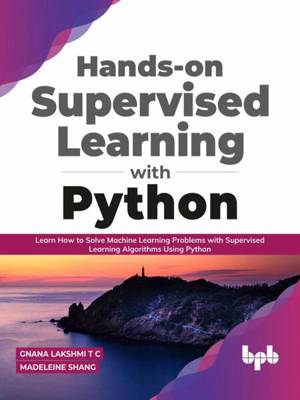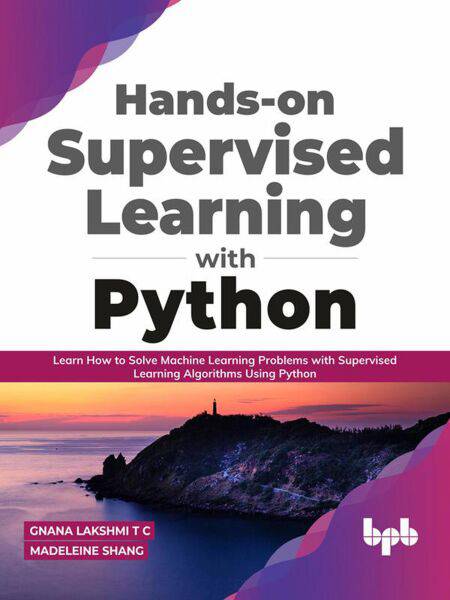
- Afhalen na 1 uur in een winkel met voorraad
- Gratis thuislevering in België vanaf € 30
- Ruim aanbod met 7 miljoen producten
- Afhalen na 1 uur in een winkel met voorraad
- Gratis thuislevering in België vanaf € 30
- Ruim aanbod met 7 miljoen producten
Zoeken
Hands-on Supervised Learning with Python: Learn How to Solve Machine Learning Problems with Supervised Learning Algorithms Using Python (English Edition) E-BOOK
Learn How to Solve Machine Learning Problems with Supervised Learning Algorithms Using Python
Gnana Lakshmi T C, Madeleine Shang
E-book | Engels
€ 8,49
+ 8 punten
Omschrijving
Hands-On ML problem solving and creating solutions using Python. Key FeaturesIntroduction to Python Programming Python for Machine Learning Introduction to Machine Learning Introduction to Predictive Modelling, Supervised and Unsupervised AlgorithmsLinear Regression, Logistic Regression and Support Vector MachinesDescriptionYou will learn about the fundamentals of Machine Learning and Python programming post, which you will be introduced to predictive modelling and the different methodologies in predictive modelling. You will be introduced to Supervised Learning algorithms and Unsupervised Learning algorithms and the difference between them. We will focus on learning supervised machine learning algorithms covering Linear Regression, Logistic Regression, Support Vector Machines, Decision Trees and Artificial Neural Networks. For each of these algorithms, you will work hands-on with open-source datasets and use python programming to program the machine learning algorithms. You will learn about cleaning the data and optimizing the features to get the best results out of your machine learning model. You will learn about the various parameters that determine the accuracy of your model and how you can tune your model based on the reflection of these parameters.What will you learnGet a clear vision of what is Machine Learning and get familiar with the foundation principles of Machine learning. Understand the Python language-specific libraries available for Machine learning and be able to work with those libraries.Explore the different Supervised Learning based algorithms in Machine Learning and know how to implement them when a real-time use case is presented to you.Have hands-on with Data Exploration, Data Cleaning, Data Preprocessing and Model implementation.Get to know the basics of Deep Learning and some interesting algorithms in this space.Choose the right model based on your problem statement and work with EDA techniques to get good accuracy on your modelWho this book is forThis book is for anyone interested in understanding Machine Learning. Beginners, Machine Learning Engineers and Data Scientists who want to get familiar with Supervised Learning algorithms will find this book helpful.Table of Contents1. Introduction to Python Programming2. Python for Machine Learning 3. Introduction to Machine Learning 4. Supervised Learning and Unsupervised Learning 5. Linear Regression: A Hands-on guide 6. Logistic Regression An Introduction7. A sneak peek into the working of Support Vector machines(SVM)8. Decision Trees9. Random Forests10. Time Series models in Machine Learning11. Introduction to Neural Networks12. Recurrent Neural Networks13. Convolutional Neural Networks14. Performance Metrics15. Introduction to Design Thinking16. Design Thinking Case Study
Specificaties
Betrokkenen
- Auteur(s):
- Uitgeverij:
Inhoud
- Aantal bladzijden:
- 384
- Taal:
- Engels
Eigenschappen
- Productcode (EAN):
- 9789389328974
- Verschijningsdatum:
- 3/01/2021
- Uitvoering:
- E-book
- Beveiligd met:
- Adobe DRM
- Formaat:
- ePub
- Afmetingen:
- 191 mm x 235 mm
- Gewicht:
- 657 g

Alleen bij Standaard Boekhandel
+ 8 punten op je klantenkaart van Standaard Boekhandel
Beoordelingen
We publiceren alleen reviews die voldoen aan de voorwaarden voor reviews. Bekijk onze voorwaarden voor reviews.








